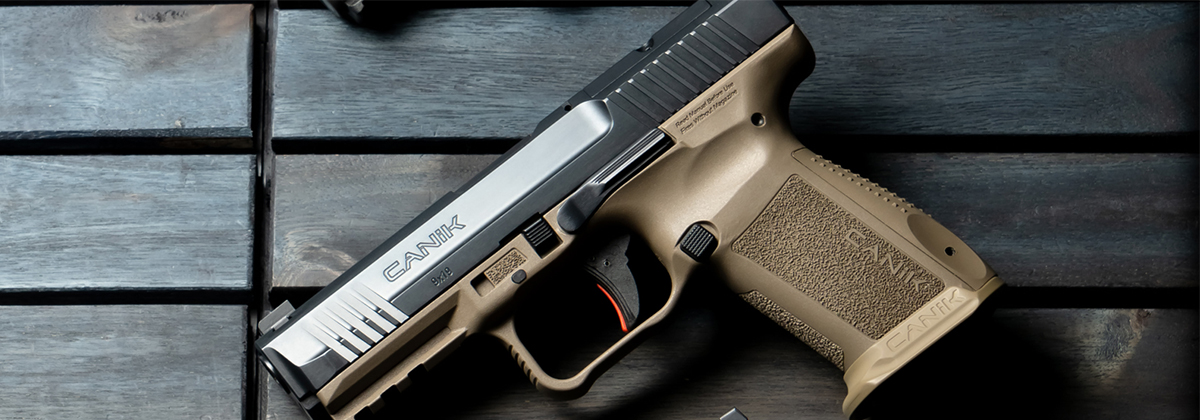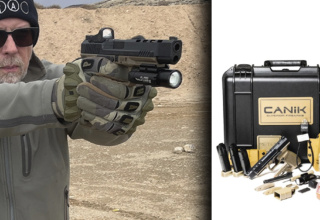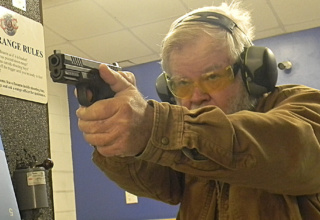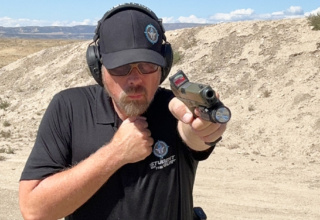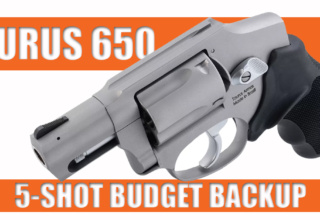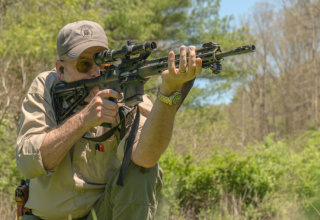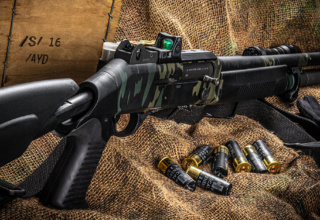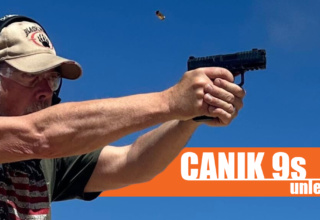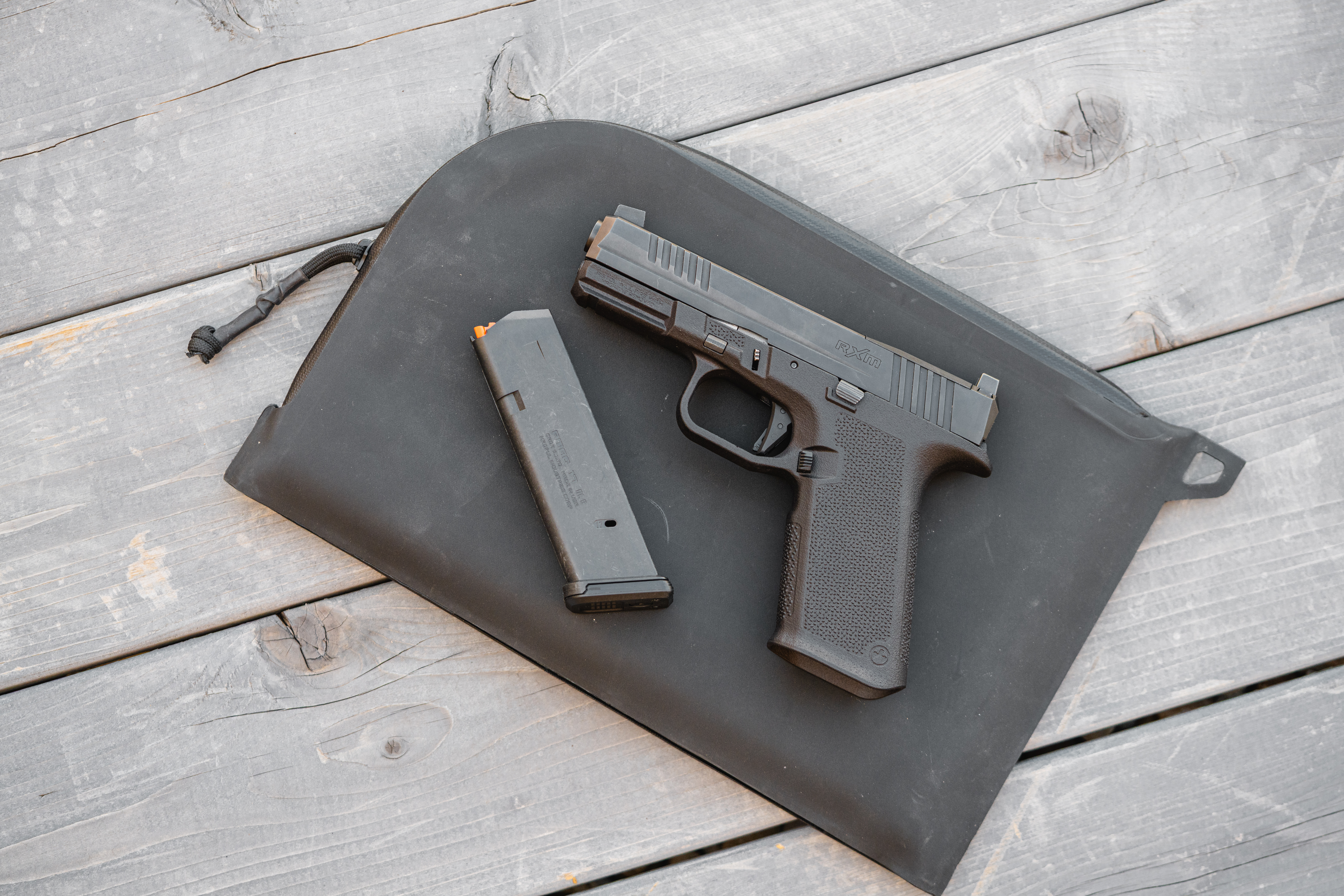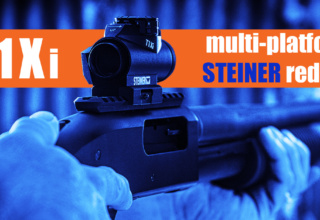What makes these Turkish guns different from other plastic pistols? Our author gives his take after more than a decade behind the Canik 9 series.
by Paul G Markel
For the last decade, there has been a gun company slowly but surely building a solid reputation for reliability and practicality. Canik USA, a part of Century Arms, started out with one striker-fired, polymer-framed (SFPF) pistol and has expanded dramatically since.
In our modern world, where it seems that every gun company has at least one model SFPF pistol (most have several), you might be wondering what makes Canik special? How are their guns any different from all the others?
Such will be the subject of this discussion.
“The Dolphin Gun”
The first Canik pistol that I ever tested was their 2012 “TP9” — affectionately known as “the dolphin gun” due to the company putting their dolphin logo on the grip of the original guns. The pistol was essentially a different version of the Walther P99, which became the SW99. It was a striker-fired gun with a slide-mounted decocking button on the top. First shot DA, following shots SA, but no external hammer mechanism.
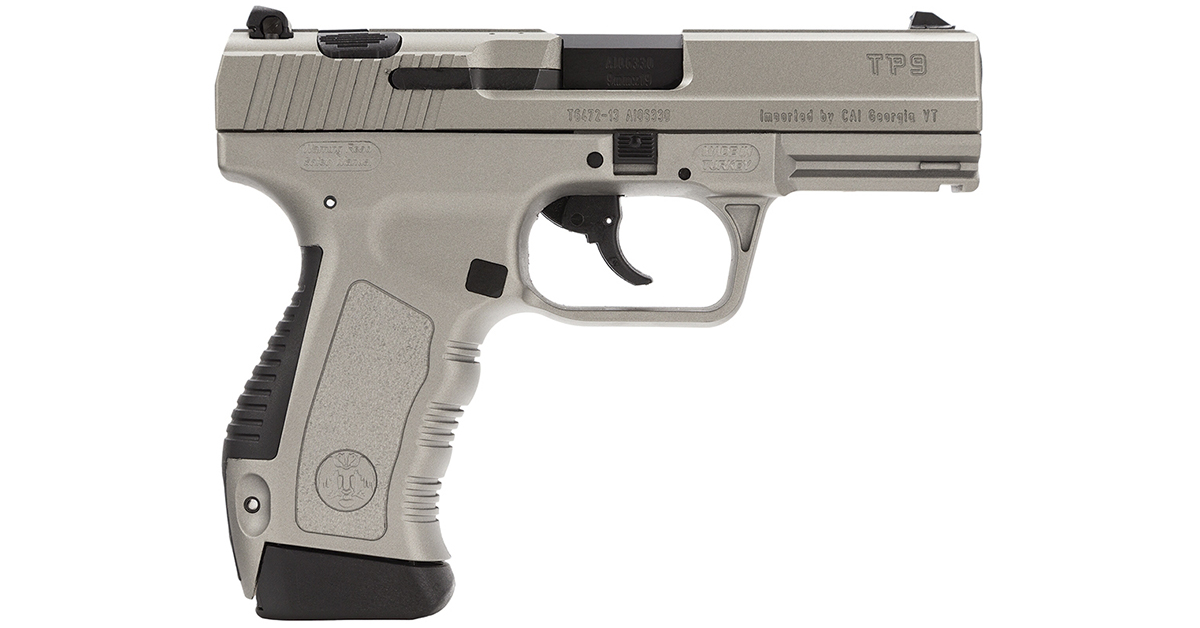
That gun had an 18-round magazine (though cramming that last round in was quite a chore), polymer frame, steel slide and barrel, and it worked just fine. I had previously tested the P99 and SW99, which felt good in the hand and performed as advertised. The Canik 55 TP9 had the advantage of having a much lower MSRP than the aforementioned; however, it was not different enough or special enough to get me to stop carrying my G19.
The TP9 SA
Shortly after the original dolphin gun TP9, Canik USA introduced the TP9 SA (single-action) in a full-sized, duty-style pistol. “What’s it going to take to get a TP9 into your holster?” my friend at Century Arms asked me during a phone call. I agreed to give the new gun a fair shake and evaluate it. I ordered one and shortly thereafter began my review.
The TP9 SA was similar to the original, but the frame and slide were slightly redesigned, and the internal workings were more akin to the G19s and G17s of which I had been using for a couple decades. Canik kept the slide mounted decock button, but this time the purpose was not for returning to a DA trigger press. To disassemble the TP9 SA for maintenance, you remove the tension on the striker by depressing the button and then you can pull down on the takedown lever and remove the slide. No trigger press is needed to take the gun apart.
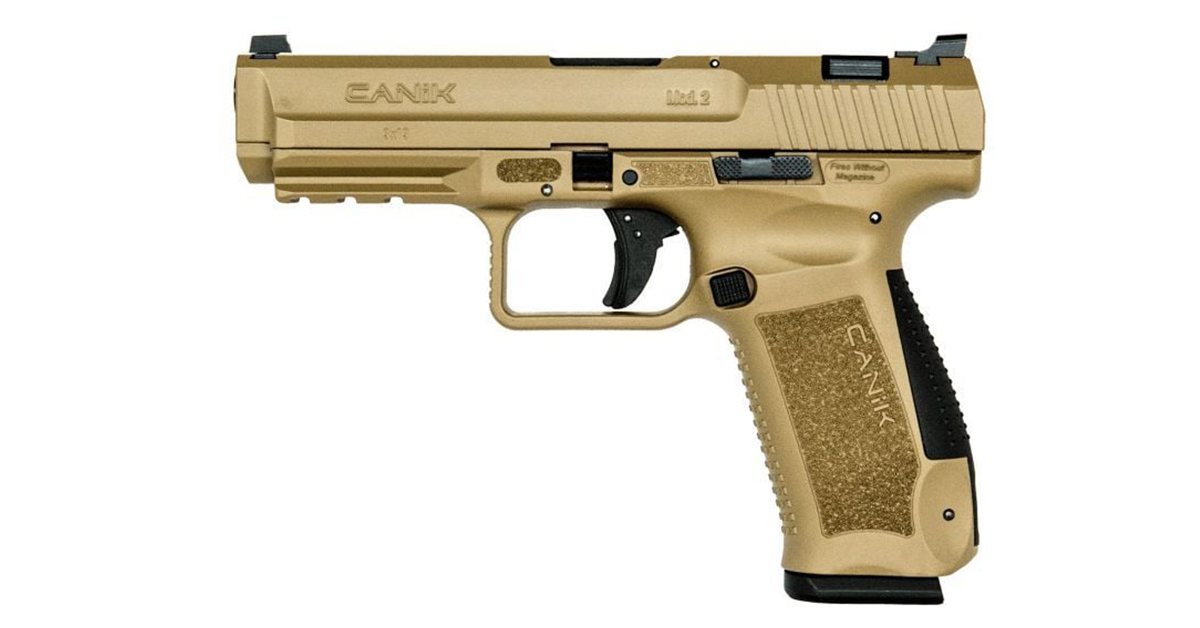
When the TP9 SA came out, internet clowns carped about how the decock button was going to get inadvertently pressed and you would have a “dead gun” when you drew it from the holster. Of course, I should mention that the same internet clowns carped about how they would “never own a gun that you need to pull the trigger to disassemble.”
But I digress.
I started my eval and found that I really liked the way the gun felt and ran. To test the gun’s appetite, I ran every type of 9x19mm I could get my hands on — brass case, nickel case, aluminum case, green and gray lacquered steel cases… Also, I used a wide variety of projectiles, from FMJ to different JHP designs. The gun ate it all and begged for more. Before I knew it, I had fired over a thousand rounds in various outings and training sessions. No, I did not just pull the trigger 1000x. Like the previous SFPF pistols I had encountered, I found that the more I shot the pistol, the better the trigger feel became. Also, after innumerable training sessions, at no time did the decocking button ever get negligently bumped.
True to my word, I purchased an IWB holster and started carrying the Canik TP9 SA every day, 12 hours a day, 7 days a week. Even in the heat of the Biloxi, MS, summer, I carried a full-sized pistol under a T-shirt. The only downside to the SA, from my perspective, was the proprietary sights that were steel and a bit too short. You could not just swap the originals out for a tritium front sight.
Capitalizing on Success
With the success of the TP9 SA, Canik USA started introducing new models with slight improvements each time. They listened to the end users — something not all companies do. Canik USA released compact models and competition models. To their great credit, they kept the same magazine profile. While the round count might have changed, the steel magazines were consistent. Even the compact and subcompact models would accept the larger mags.
The METE
After several years of testing full-sized, compact, and subcompact Canik guns, I thought that they had gotten as good as they were going to get. I was wrong. “We have a new line coming out,” my Century contact informed me, “They are based upon the gun we built for military service pistol trials.”
The new models, called the METE (pronounced met-ay), were produced with ever-so-slight improvements on the TP9 series. For one, on the TP9 optics-ready guns, the rear sight was part of the cover plate. On the METE, when the cover plate was removed for an optic, the steel rear sight remained. Like the upgraded TP9 series, the METE steel front could be replaced with a Tritium model. Interchangeable backstraps were introduced as well. The slide lock was ambidextrous but recessed so as to be out of the way.
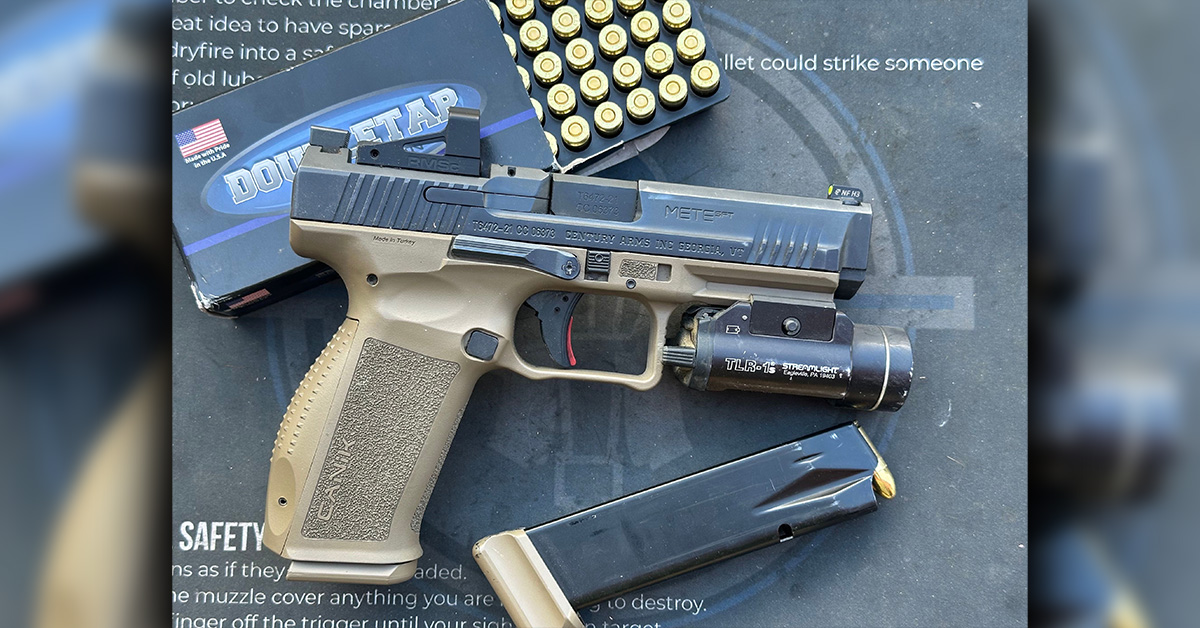
I rough-tested the METE SFT in a manner similar to a military trial and the gun proved to be rhinoceros-tough. Not surprisingly, the pistol consumed every type of 9x19mm I fed it and put rounds on target with reliable accuracy. Forty-yard hits on steel half-silhouette targets were point of aim, point of impact.
Interestingly, on the newer models, Canik did away with the decock button on the slide. After all the carping about the evils of pressing the trigger to take apart the gun, American gun buyers seemed not to care. You can still purchase a TP9 SA Mod 2 with that feature if you so desire.
The MC9 and The “Prime”
With the success of the standard-sized METE line, Canik USA released a subcompact line called the MC9.

The MC9 was designed to compete with the current crop of subcompact EDC guns. Working their engineering magic, the MC9 designers maintained the original magazine profile and the desirable features of the METE but kept it almost identical in size to the G43 and the SIG 365. Despite its subcompact size, the MC9 uses a flush 12-round 9mm magazine and an extended 15-round magazine. These are factory mags, not aftermarket.
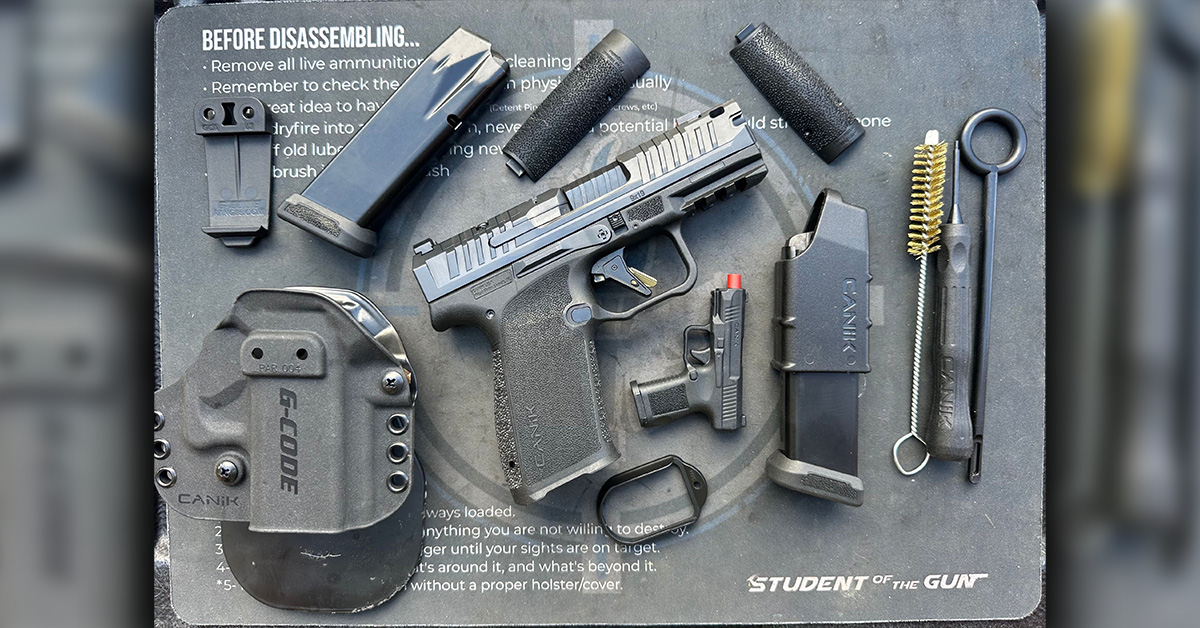
Although it might seem redundant, the success of the MC9 led to the most recent offering; the MC9 Prime. The Prime has a redesigned frame and slide, but it internally functions just like the original MC9. All the quality control and reliability that went into the METE line went into the Prime; however, Canik put Gucci features on the gun to attract the Instagram gun-buying crowd.
The Prime is optics-ready, but it comes stock with Night Fision Tritium sights. Also, the Prime comes in a “Pelican-style” padded hardcase with a bevy of accessories to include a G-Code holster that can be transformed from IWB to OWB. Two 17-round mags come with the Prime, yet it will accept full-sized TP9 mags that include the 20-round versions.
While I have zero use for porting on a 9mm carry gun, the Instagram kids have got to have it. So, Canik included that feature on the Prime as well. The Prime trigger has a gold-colored “flat face trigger with 90° break.” Once again, this trigger design is a winner and feels amazing for a stock factory gun.
ISO 9001 NATO Factory
Canik pistols are not made in some warehouse in Turkey. The Canik facility is an IS0 9001:215 certified NATO small arms manufacturing factory. Modern 21st century technology is used to guarantee a high level of consistency and quality control. This facility is such that it can rival other gun makers such as Beretta and Heckler & Koch.
While the US Military and American law enforcement are not breaking down their doors, Canik pistols are in use by militaries and police agencies in Europe, Asia, Africa, and South America. The METE SFT has successfully passed military endurance trials.
Why is Canik Different?
Returning to the original question, what makes Canik different from every other gun maker? Yes, the Canik factory has the top rating for manufacturing, and they have military and LE contracts, but that is not necessarily what makes them different.
From my experience, in just the last ten to twelve years, what has made Canik USA guns stand out is the constant improvements that have been made over what really has been a relatively short amount of time. They listened to the end users and made improvements where the suggestions were valid (no, they are not coming out with a .40 S&W subcompact version). Very few other companies can honestly claim that they do that.
I can honestly say that I have reviewed at least a dozen different Canik USA pistol models from the T9 and METE series. Reliability and accuracy have never, ever been an issue. I can’t say that I never had a stoppage, but they have been rare, like a unicorn munching on four-leaf clovers.
While no implement made by the hands of man can claim to be “perfect,” given the current level of sophistication of the METE line, it is hard to think of any way to improve on what is available. And, as an added bonus, Canik pistols are a tremendous value for their price.

